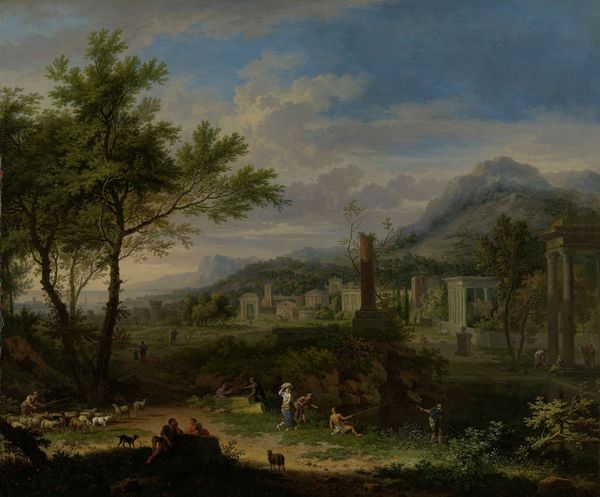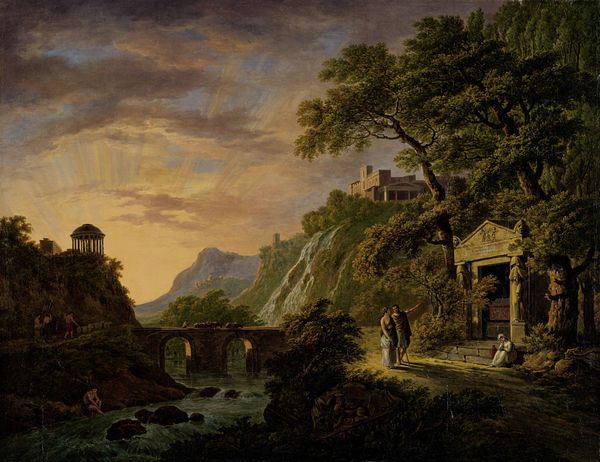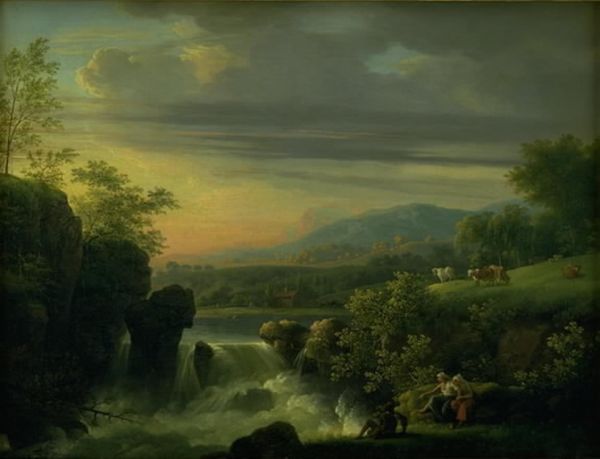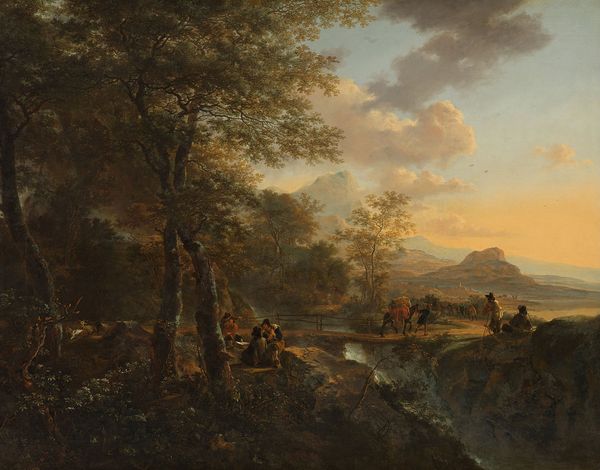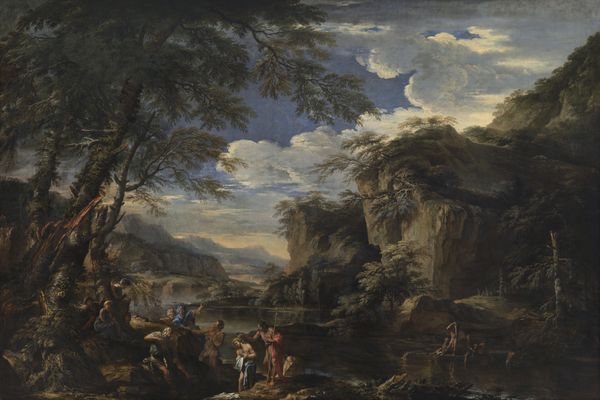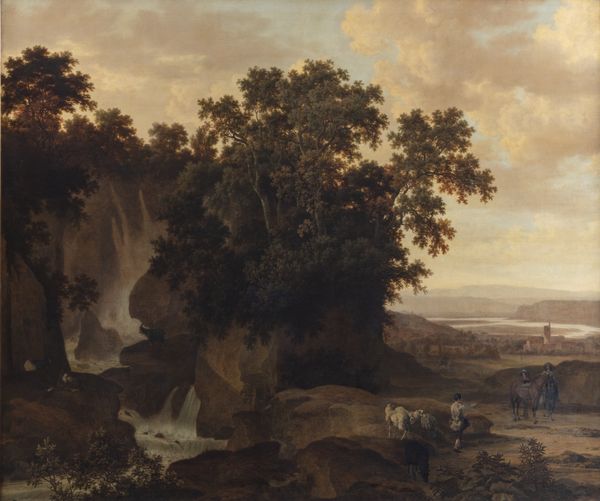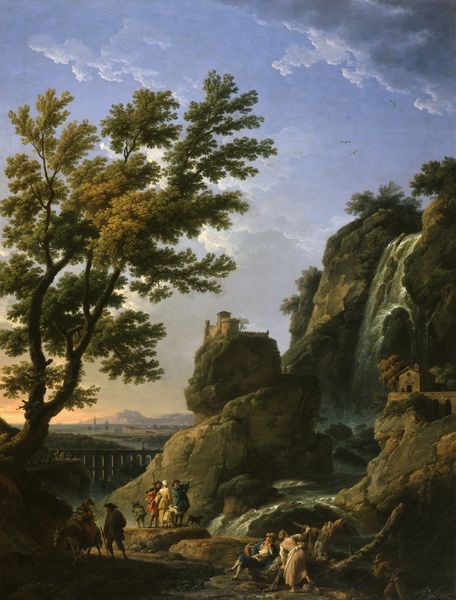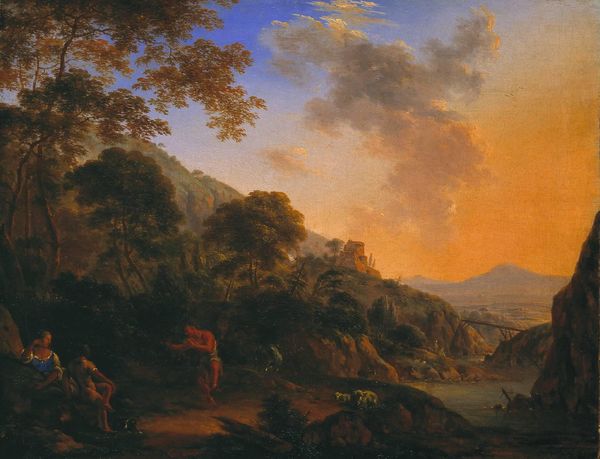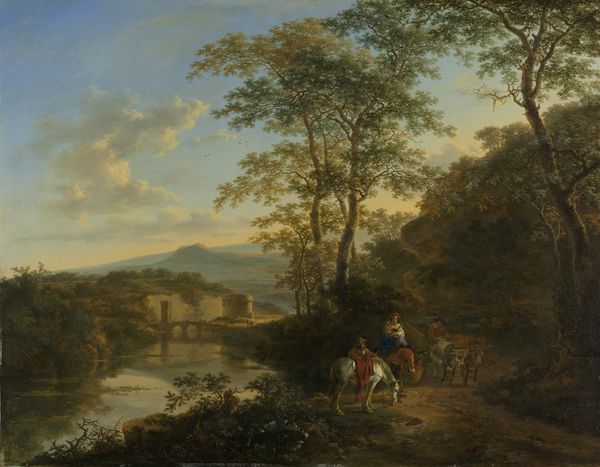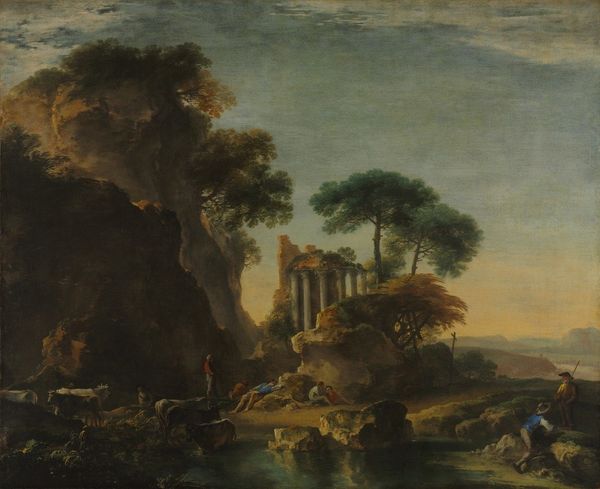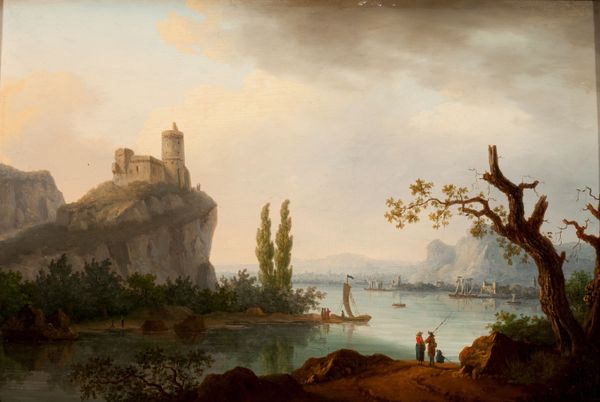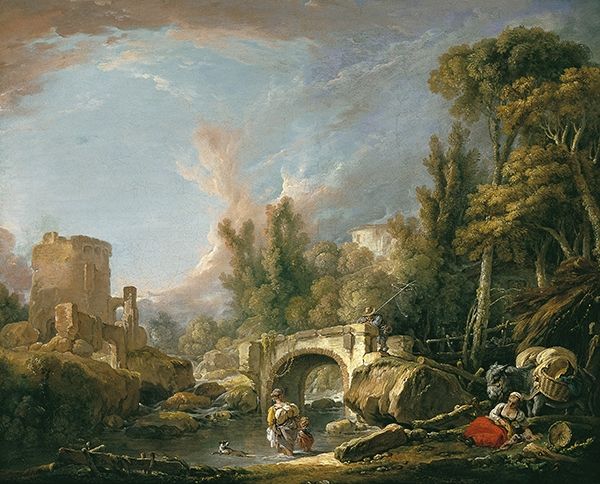
Copyright: Public domain
Pierre-Henri de Valenciennes created "The Ancient City of Agrigento," an oil on canvas, which hangs in the Louvre. The painting’s structure is dominated by a juxtaposition of ruins in the foreground and an idealized city in the background, bathed in a soft, diffused light. The artist uses a muted palette, with earth tones contrasting against the cool blues and grays of the sky. Valenciennes masterfully employs the picturesque aesthetic, inviting contemplation on the passage of time and the contrast between the natural and the built environment. The ruins, rendered with careful attention to texture and form, serve as a memento mori, reminding us of the transience of human achievement. At the same time, the idealised representation of the city evokes the classical values of order, reason, and harmony. Note how Valenciennes uses the formal qualities of light and composition to create a dialogue between past and present, decay and idealization, reflecting broader philosophical concerns of the period. Valenciennes prompts us to reflect on the cyclical nature of history and the enduring power of art to capture fleeting moments.
Comments
No comments
Be the first to comment and join the conversation on the ultimate creative platform.

